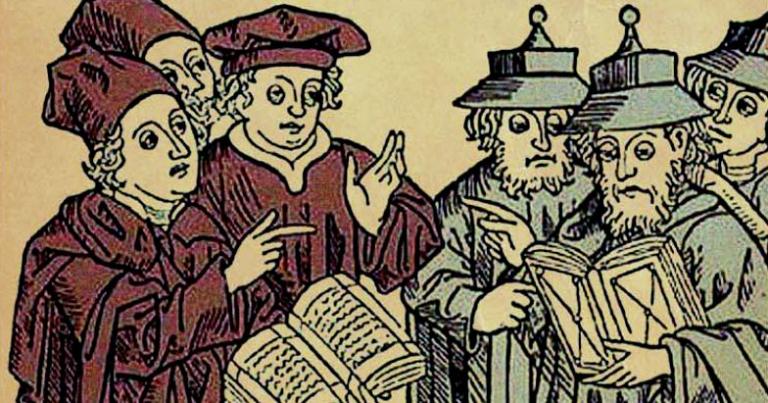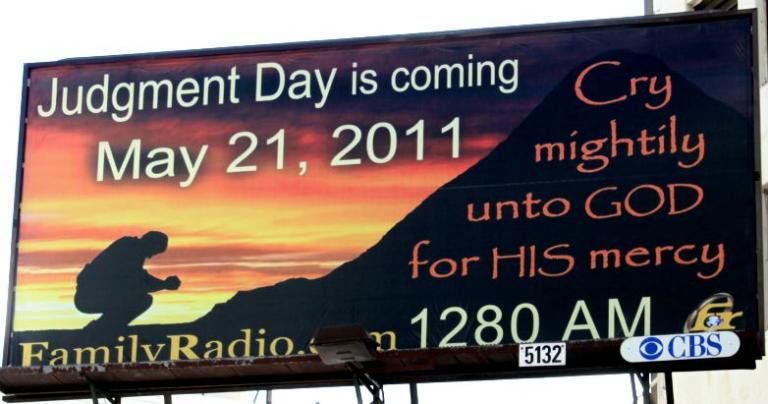
I summarized the astrological interpretation of the New Testament from Zeitgeist: The Movie (2007) here and responded to the star of Bethlehem argument here. Let’s wrap up with a critique of the movie’s astrological interpretation of the meaning of Jesus on earth.
Jesus
Zeitgeist says that the plane of the sun moves south from June through December. The sun stops this motion for a few days around the solstice (December 22–24) near the constellation of the Southern Cross. It moves again, back to the north, starting on December 25. The sun dies on the cross and is soon reborn, which parallels the son dying on the cross and then rising after three days.
- The most glaring problem is the son/sun parallel. Saying that the Son dying on a cross actually meant the sun dying on the Southern Cross is clever, but this homonym only works in English. Son/sun sounds identical in modern English, but this is irrelevant because (everybody say it with me) the New Testament wasn’t written in modern English! Take away the homonym, and this story largely falls apart.
- Can you can see the constellation of the Southern Cross from the Middle East? Jerusalem is north of latitude 31°, but you must be at 25°N or lower to see it. However, precession has changed this. In the time of Jesus, this constellation would’ve been visible in the Middle East, so this (surprisingly) isn’t a problem.
- But even with the Southern Cross visible, would the sun ever be “on” the Southern Cross? No, for two reasons. There are lots of constellations, but the twelve astrological constellations are on the ecliptic, the path that the sun makes through the sky. The Southern Cross is about 50° south of Virgo, so while the sun can be “on” Virgo, it will never touch the Southern Cross. Second, the sun is in Virgo in September. It then passes through Libra, Scorpio, and Sagittarius by the time of the winter solstice. Imagine an observer looking at the Southern Cross on December 25 and hoping to see the sun on it. If they tipped their head to make the ecliptic the horizon, the sun would be about 90° too far left at that moment, and it would always be about 50° too far up.
- When was the Southern Cross seen as a distinct constellation and not part of something else? Ptolemy in the second century CE saw these stars as part of a larger constellation, that of Centaurus. The first documentation of the Southern Cross as a separate constellation was in 1592. In other words, there was no Southern Cross at the time of Jesus.
- Why the interest in December 25? If the topic is resurrection symbology—Jesus dying on the cross and rising again—that happened at Easter.
- The winter solstice happens not on a day but at a precise moment. Before that moment, the plane of the sun was tipping to the south, and after that it tips north. If you must imagine a rest period (which doesn’t actually happen), that would not be December 22–24 but would more plausibly be December 20–23, the date range for the solstice.
After the spring equinox (around Easter), light finally becomes greater than dark. Jesus is born again with the rising of the sun every morning.
- The sun is “born again” every day (or, if you prefer, once a year on the winter solstice), but being born again wasn’t a thing for Jesus, just for his followers. Jesus resurrected, and that supposedly happened just once. And even a Christian being born again is supposed to only happen once.
- Easter is defined as the first Sunday after the first full moon after the spring equinox. This means that it varies within a 34-day window. Easter is only roughly tied to the equinox.
Ages
Zeitgeist says: an astrological “age” is one twelfth of one cycle of the precession of the earth (26,000 ÷ 12 = 2150 years). We’re nearing the end of the Age of Pisces (0 – 2150 CE). Moses represented the new age of Aries the Ram (2150 BCE – 0) and a rejection of the previous age, that of Taurus the Bull.
- “Ages” in the New Testament isn’t a reference to astrology but to Apocalypticism. When Jesus said, “Surely I am with you always, to the very end of the age,” he was talking about an age that would end soon—in years or decades, in the lifetime of many of his hearers. Apocalypticism was a religious view popular in Judaism during the time of Jesus and before.
- Did the ancients know about the precession of the sun through the zodiac that makes the astrological ages? Hipparchus (second century BCE) could’ve known, but this is disputed. Even if he did, he had only a rough idea of the rate of change, which is a long way from the astrological idea of 2150-year-long ages known in the Middle East.
- Moses was probably a legendary figure, but even if we ignore that, he was said to have been born in the 1500s to 1300s BCE, many centuries after the start of the Age of the Ram in 2150 BCE. Any imaginary Aries vs. Taurus friction would’ve been in the distant past, so why would Moses want to make the point? And who would need to hear that Aries had firmly supplanted Taurus?
- Many civilizations saw constellations, but they didn’t see the same ones. Did the Taurus/Aries/Pisces astrology that we know today exist in the minds of the authors who wrote about Moses in the Pentateuch (the first five books of the Bible), probably around 900 BCE? All these questions must be answered with good evidence before this argument is worth considering.
Zeitgeist: Jesus was born at the start the Age of Pisces the Fish. We even see a hint of the next age with the reference to the water bearer, Aquarius.
- If this point of this verse is that Aquarius will be the next age, how would this be newsworthy? It is debatable whether people of that time shared our conception of astrology and the zodiac, but if they did, they would already know this. When the Age of Pisces has just started, why waste the ink getting people excited about the Age of Aquarius, which wouldn’t arrive for more than 2000 years?
- What kind of theology changes with the zodiac sign? Aries introduces Moses, and Pisces introduces Jesus . . . so then the unchanging Truth will change again with some new guy for Aquarius?
- Jesus was short-term focused. The Apocalyptic end of the age was to happen soon. There was no concept of a perpetual cycle of ages.
Conclusion
Many people have found this popular video compelling, and yet a little skepticism and research defeat this Christian astrology section many times over. Skeptical atheists and Christians will both see this as a shaky argument. Perhaps that agreement could lead to the question, why is the Christian story any less so?
It should be thrown with great force.
— Sid Ziff, Los Angeles Mirror-News
.
Wikimedia / Image public domain
.














